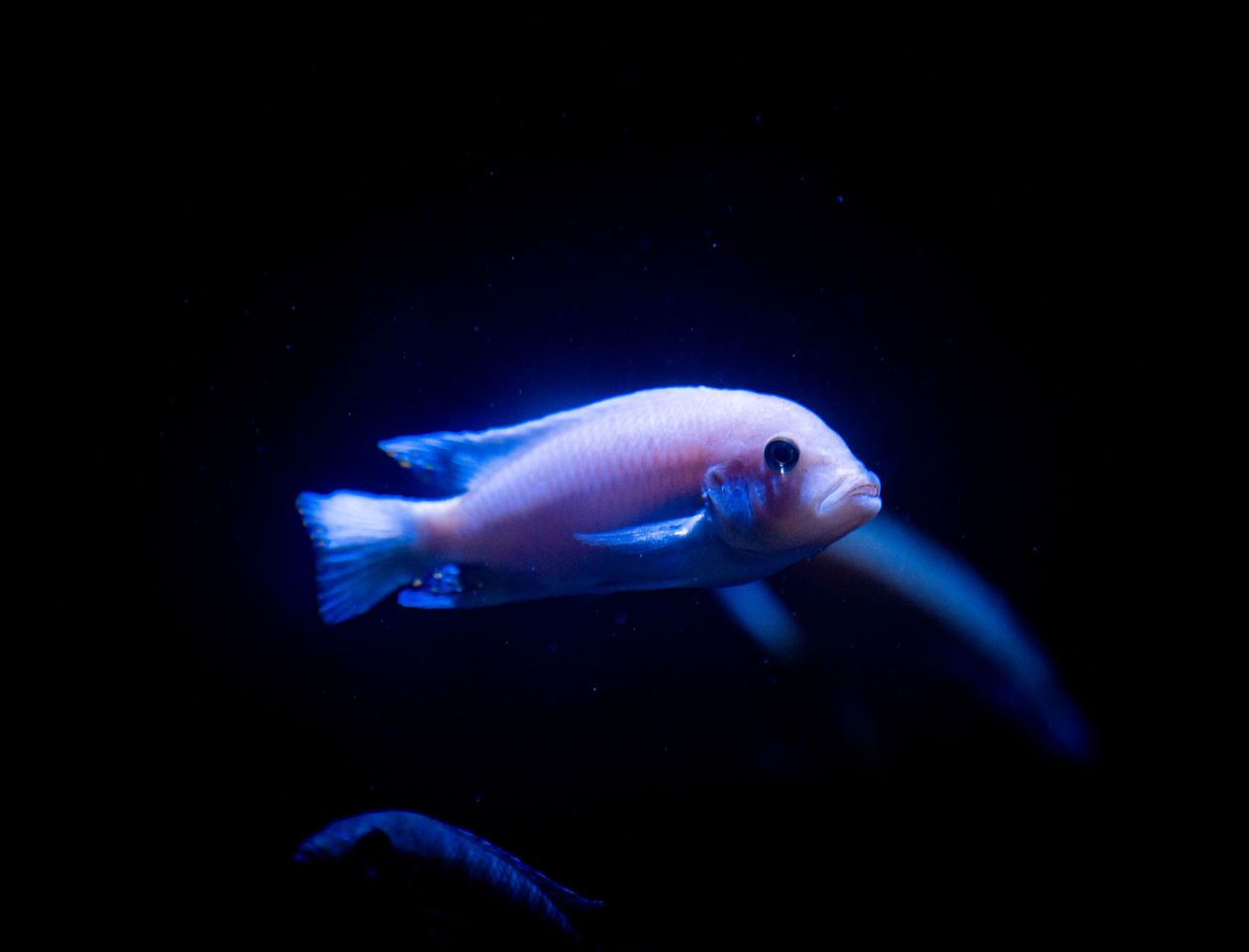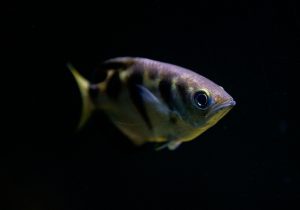
Where do you start with a fish that has 1732 known species, and more that are still supposedly waiting to be discovered? But since we have plenty of Cichlids here, we reckon we’re up to the task.
Want to know more about what cichlids look like, what they love to eat and where these colourful characters come from? Let’s dive in below!
What do cichlids look like?
Since there are so many different species, including Malawi, chisel toothed and Midas varieties, cichlids can look very different from one another when it comes to colour. You might see some with yellow scales and bright blue fins, for example, while others might have a silver body with black splotches. Oranges and pinks can also be common on other varieties.
They can also differ in terms of size too. You might see cichlid that are as small as two inches, or as big as 12 inches, but cichlid have been known to reach up to 36 inches in length. The same goes for their weight too. Certain cichlid weigh in at less than an ounce, while others can tip the scales at 3kg.
Despite their differences, cichlid are generally deep bodied and have one nostril on each side of their head – most other fish actually have two!
What do cichlids eat?
The diets of cichlids can differ too. Some species are completely herbivorous, while others are fully carnivorous. Veggie cichlids will feed on small plant matter known as phytoplankton, but even among meat eaters, their dining habits can change.
When it’s feeding time, certain carnivorous cichlids will sweep through algae beds on the sea floor, filter out water and chow down on tiny marine animals they might find. Bigger varieties can be more vicious, crushing the shells of entire molluscs and eating them whole, or grabbing onto their feet and sucking them out of the hole in a single gulp.
There are even species that will consume entire eggs or larvae of other cichlids. They do this by targeting mothers with eggs stored in their mouths. They’ll repeatedly ram into these mothers so they release the eggs, which are then free to be devoured.
Where do cichlids live?
Most cichlids live in freshwater rivers and lakes in Africa, Central America and South America, but it’s Africa’s Lake Malawi where they’re especially large in number – there’s at least 850 species in there alone! In fact, it’s where the ones we have are from.
Lake Malawi is a huge lake (it’s actually 347 miles long!) and so there are all sorts of rocky shores, sandy bottoms and large open water areas to it. Certain types of Malawi cichlids live in certain areas, and for this reason, they live in different parts of the lake.
Malawi cichlids come in two basic groups. First, the Mbuna (or rock fish) which as you probably guessed are more at home in the lake’s shallow rocky areas found along its shores. Then we have the Peacock variety, which can be found in the lake’s open waters, where they prefer the peace and quiet compared to the hustle and bustle of life by the rocks.
What cichlids can live together?
Good question! The Mbuna variety can be very territorial. They love their own space, and don’t play well with others – sometimes not even their own. It’s not a good idea to keep two Mbuna males together, unless the area is big enough for each to claim their own territory. This is because they will fight for the space. As such, both varieties of Cichlid will very rarely meet in the wild.
How long do cichlids live?
Cichlids can live for up to 8 years.
How long do cichlids hold eggs for?
We know this is a pretty strange sounding question, but there’s a good reason for asking it. This is because some cichlid are mouthbrooders. Mouthbrooding goes a little like this:
- A male digs a pit with his mouth and fins in shallow water, defending this from other males
- An interested female lays her eggs by the male
- The male fertilises these eggs
- The female returns to take these eggs in her mouth
- These eggs then gestate in her mouth for 21 to 36 days
The other method is known as pit spawning. This involves the female depositing her eggs into a shallow pit so that the male can fertilise them. The gestation period for eggs using this method lasts from five to 15 days.
Where can you find Cichlids at Deep Sea World?
Want to see these fascinating creatures for yourself? You can say hello to them at our Lake Malawi exhibit!
Fun facts about Cichlids
Here’s a few more interesting Cichlid tidbits for you to check out…
- The genus name of the facial sensory pits that allows the peacock variety to hunt translates to ‘flute face’
- Depending on the species of cichlid, they may go about their business during the day or at night
- Once cichlids are born, the mother may keep them in her mouth for an extra week to keep them protected. After this, they’re on their own and need to fend for themselves
- Since they don’t have any eyelids, the cichlid sleeps with its eyes open!
- Male cichlids do a little dance in front of females to begin the mating process
- Female cichlids can lay anywhere from 200 to 20,000 eggs!
Type
Fish: Colourful mouth brooder
What do they eat?
Algae, plants, larvae and fish
Size
25cm Max
Water Type
Fresh water
Where are we?
Amazon River & Lake Malawi

